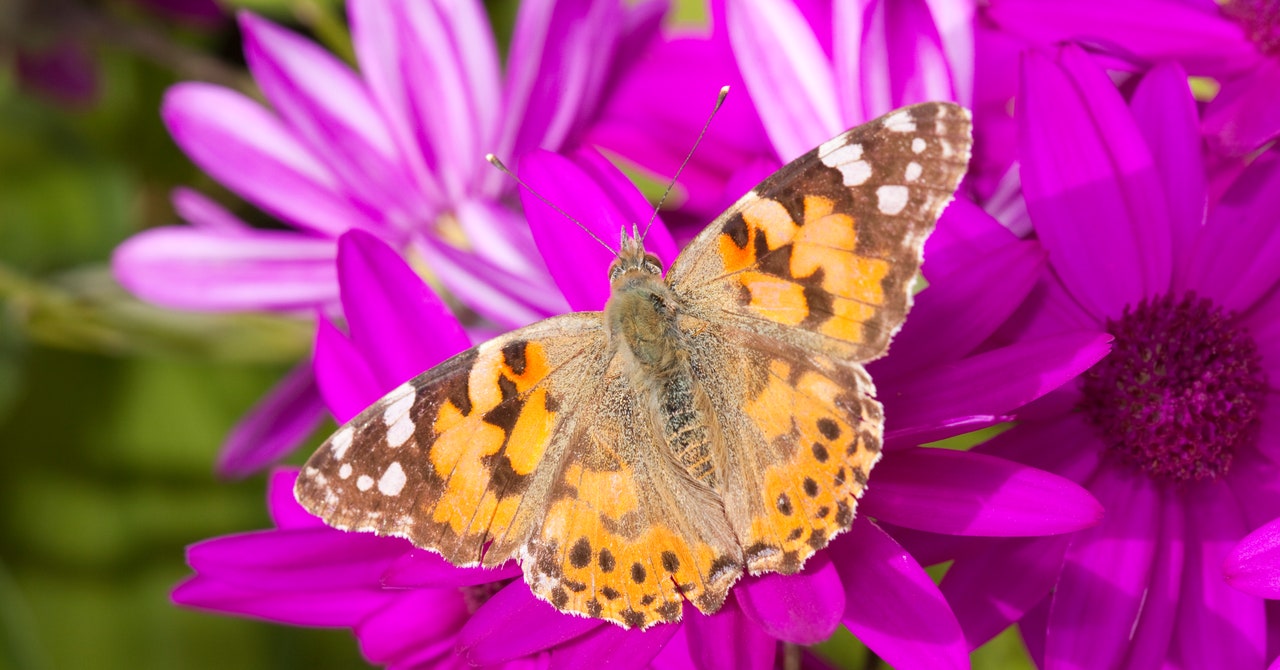THIS STORY IS ORIGINAL Appeared on WIRED Italy and has been translated from Italian.
The twelve butterflies were flying gracefully across a beach in French Guiana when Gerard Talavera spotted them. It took only a moment to see that they were extraordinary. These were not just any butterflies, he saw, but painted ladies (Vanessa card)—beautiful orange, white, and black insects that do not live in South America. They regularly migrate from Europe to sub-Saharan Africa, but stop several times along the way to rest. To reach this beach, Talavera realized, they would have had to travel more than 4,200 kilometers, crossing the Atlantic Ocean without a break.
That was in 2013. Now, after 10 years of research, Talavera, an entomologist at the Botanical Institute of Barcelona, in collaboration with an international research team, has proven that the insects did indeed cross the Atlantic, and they think they know how. The details of this long migration are published in Nature communication.
To trace the butterflies’ mysterious journey and prove their origins, the team conducted a series of analyses. Although migratory insects like butterflies are numerous, tracking them is very difficult for scientists: for example, researchers cannot attach tracking devices as they would with other animals, because these are often too large and heavy for the insects to carry. Clues about the butterflies’ origins had to be gleaned from other datasets.
First, the team examined meteorological data from the weeks prior to the butterflies’ arrival and found that wind conditions could have supported a journey from Africa to South America. The experts also sequenced the butterflies’ genomes and found that they were more closely related to populations from Africa and Europe, ruling out the possibility that the creatures had flown down from North America.
Encouraged to dig deeper, the team next analyzed atoms of two chemical elements—hydrogen and strontium—in the butterflies’ wings. Elements can exist in slightly different forms, known as isotopes, as a result of having different numbers of neutrons in their nuclei. Because the concentration of isotopes varies around the world, the composition of isotopes in the butterflies’ wings can act as a geographic fingerprint, indicating their likely place of origin. The closest isotopic matches were for West Africa and Europe.
Finally, using innovative molecular techniques, the team sequenced the DNA of the pollen grains attached to the insects and were able to identify the flowers from which the creatures had collected nectar. Analysis showed that they were carrying pollen from two plant species that only bloom at the end of the rainy season in tropical Africa.
Taken together, the research suggests that the butterflies flew across the Atlantic Ocean, a feat that has never been recorded before. “We usually think of butterflies as symbols of the fragility of beauty, but science shows us that they can perform incredible feats. There is still much to discover about their capabilities,” says Roger Vila, a biologist at the Institute of Evolutionary Biology in Barcelona and co-author of the study.
It was a long journey for the insects, probably five to eight days, and was only possible because of extremely favorable wind conditions. The air currents that helped the insects, known as the Saharan Air Layer, are also responsible for transporting large amounts of dust and sand from the Sahara Desert to South America, which helps fertilize the Amazon.
“The butterflies could only have accomplished this flight by using a strategy that alternated between active flight, which costs a lot of energy, and gliding with the wind,” said study co-author Eric Toro-Delgado, who is studying for a PhD at the Institute of Evolutionary Biology in Barcelona. “We estimate that without wind, the butterflies could have flown up to 780 kilometers before using up all their energy.”
